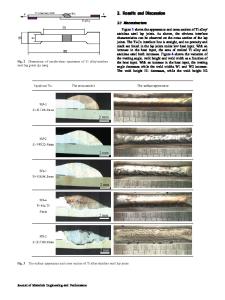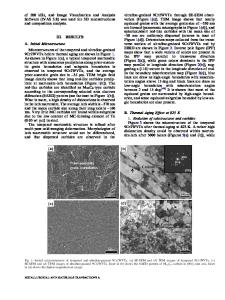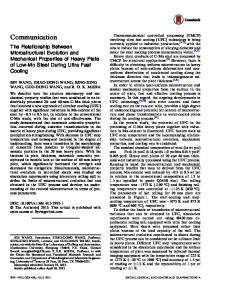Microstructural evolution and mechanical properties of the AA8011 alloy during the accumulative roll-bonding process
- PDF / 18,451,123 Bytes
- 10 Pages / 612 x 792 pts (letter) Page_size
- 62 Downloads / 389 Views
NTRODUCTION
IT has been shown that ultrafine grains less than 1 m in diameter can be obtained by intense plastic straining. The methods available for producing the high strains include cyclic extrusion compression,[1] torsion straining under high press,[2] and equal-channel angular press (ECAP),[3,4] but one disadvantage of these processes is that they are not applicable to large bulk materials. One of the novel intense straining processes for bulk materials using rolling deformation, named accumulative roll bonding, was developed recently.[5–9] In this process, the achieved strain is theoretically unlimited. The accumulative roll-bonding process has been successfully applied to the aluminum 1100 alloy,[5,6] Al-Mg 5083 alloy,[8] and Ti-added interstitial-free steel.[8,9] All these several-cycle ARB materials have structures with submicron grains and show very high strength at ambient temperature.[5–9] The commercial 8011 alloy is mainly an Al-Fe-Si alloy, which has a wide variety of end applications owing to the fact that it is possible to control the microstructural evolution of the alloy by means of specific thermal and mechanical treatments.[10] However, in a previous study,[11] we found that even submicron grains have been formed in an 8011 alloy accumulative roll-bonded (ARB) at 200 ⬚C (HT-ARB), its strength at ambient temperature did not increase with increasing strain and was greatly lower than that of 1100 alloy in the same processing condition, while the solute and particle content in the latter are lower than those in the Z.P. XING, Senior Researcher, formerly with the Korea Institute of Machinery and Materials, is with the Beijing Institute of Aeronautical Materials, Beijing 100095, People’s Republic of China. S.B. KANG, Principal Researcher, and H.W. KIM, Senior Researcher, are with the Korea Institute of Machinery and Materials, Changwon 641-010, Korea. Manuscript submitted March 12, 2001. METALLURGICAL AND MATERIALS TRANSACTIONS A
former. In this study, an 8011 alloy was ARB at ambient temperature (RT-ARB). The microstructural evaluation and the change in mechanical properties of 8011 alloy sheets during the accumulative roll-bonding process are presented in detail. For comparison, some further experimental results of HT-ARB samples are also provided in the article. II. EXPERIMENTAL PROCEDURES The material used in this study was an AA8011 alloy, whose chemical composition is shown in Table I. Fully annealed 8011 sheets with an initial thickness of 1.0 mm were prepared. The repeated cycle of the accumulative roll-bonding process can be simplified as follows: cutting → surface treatment → stacking → heating → roll bonding First, the initial materials were cut to sheets with dimension of 1.0 mm in thickness, 30 mm in width, and 300 mm in length. Then, the interface between two sheets was degreased by acetone and wire brushed. After that, the two sheets were layered with the brushed surfaces in contact and were fixed to each other closely by wires. At last, the stacked sheets were rolled at ambient tempe
Data Loading...











